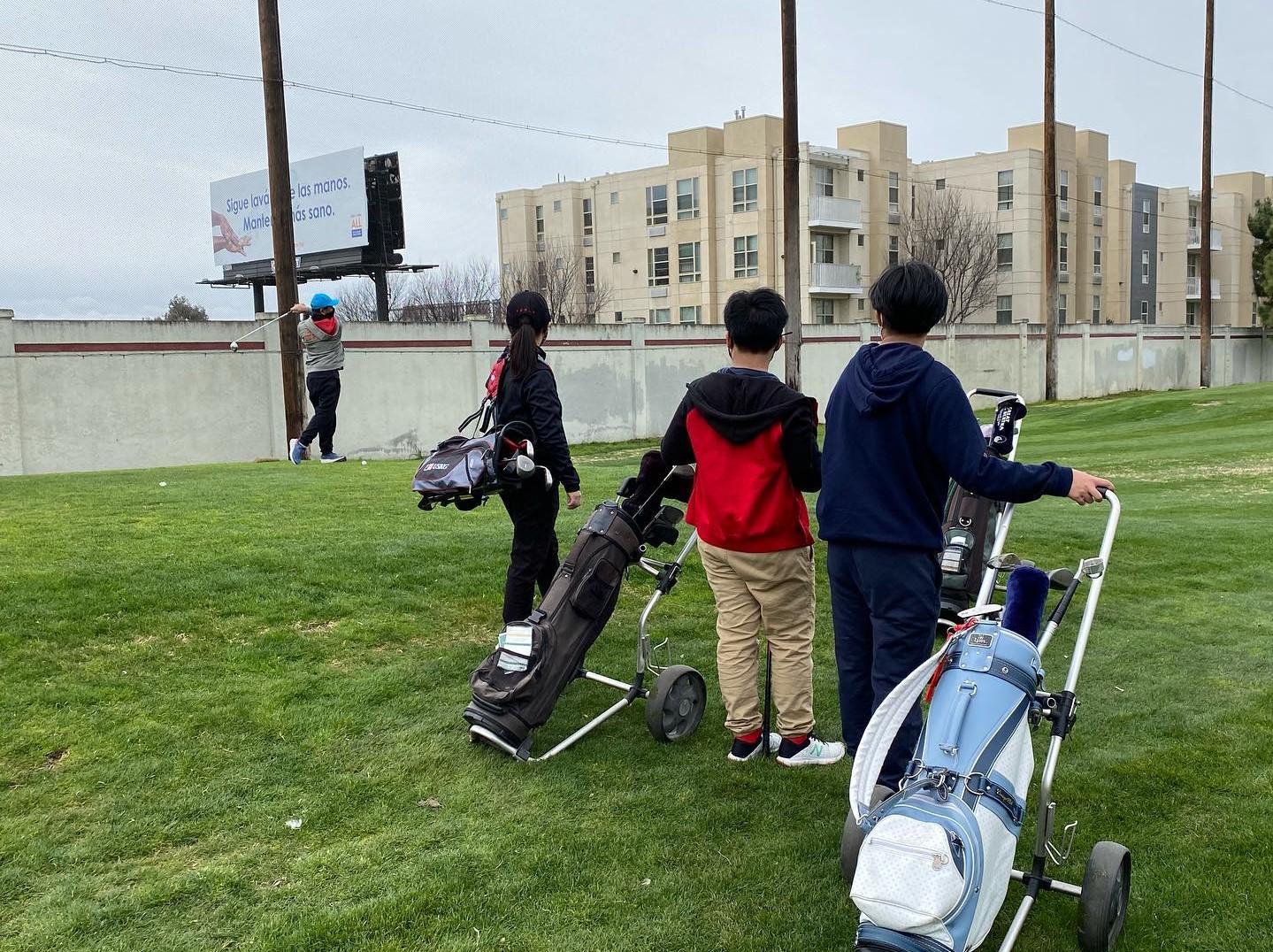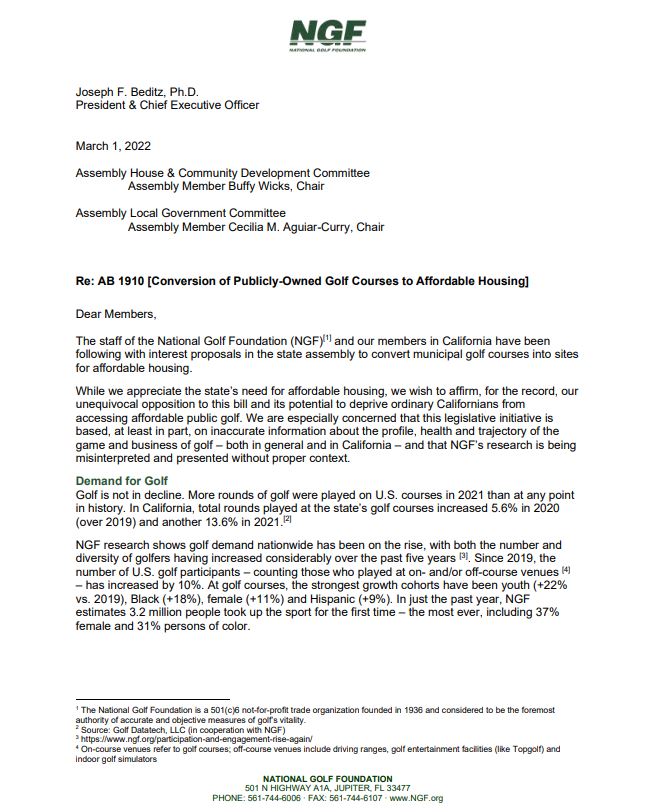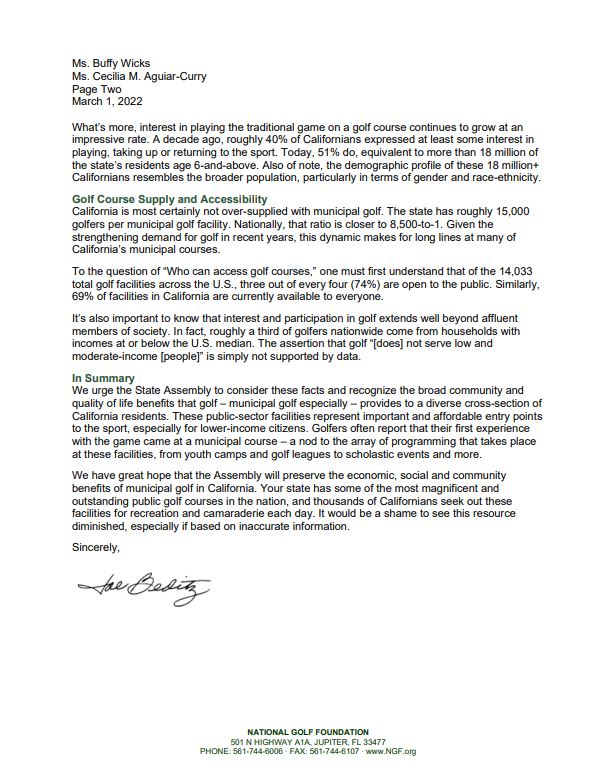NGF Responds to California’s ‘Public Golf Endangerment Act’
Public-access golf is under fire in California, misguidedly so.
For the past year, a small group of politicians has repeatedly singled out golf, proposing to remove the state’s 200+ municipal golf courses from government protections for the purpose of redeveloping them into affordable housing tracts. The third iteration of what the Southern California Golf Association is calling “The Public Golf Endangerment Act” is currently in motion (click here for PDF of the assembly bill), with golf being the only accessible open space targeted for conversion.
As Craig Kessler, Director of Governmental Affairs for the SCGA, notes:
“As we have said from day one of this saga, this is NOT about housing. It’s about singling out one and only one of California’s parks/open-green space activities for differential treatment. If it were about golf playing its part in a shared sacrifice scheme that might actually put some small dent in the state’s acute housing shortage, this would be a very different matter.”
For more information about the SCGA’s efforts to save public golf in California, click here.
Almost 3 million Californians play golf, one of the nation’s leading participation sports, and demand at the state’s municipal golf facilities is robust – from the County of Los Angeles, which owns the largest and busiest public golf system in the nation, to a 9-hole executive course like Rancho del Pueblo in East San Jose that costs juniors just $8 to play during the week. Despite ranking 2nd nationally in the number of municipal golf facilities and 3rd in public facilities, California is woefully undersupplied when it comes to public availability based on the number of golfers in the state.

A family of golfers takes to the course at Rancho Del Pueblo Course & Driving Range outside San Jose. (Photo: Rancho Del Pueblo Golf Facebook page)
Municipalities first became involved in the golf business as a way to provide an affordable recreation amenity to residents of their communities. That remains the case today at more than 2,500 municipal facilities (or munis) nationwide. These venues are where many golfers have been introduced to the game for the first time and municipal courses provide a wide range of local benefits: environmental, employment, health and wellness, social, onboarding and player development, and the preservation of green space.
The following letter is NGF’s response, from President and CEO Joe Beditz, to AB 1910.
This bill, introduced by Assembly Member Christina Garcia, includes inaccuracies about the golf business and NGF research that’s been misinterpreted or presented without necessary context. Click images below to download a PDF of the letter, which was distributed to the assembly chairs of the House & Community Development Committee and Local Government Committee, as well as others.
For more general information about municipal golf in the U.S., NGF members can access a one-page overview here:
Short Game.
"*" indicates required fields
How can we help?
NGF Membership Concierge

"Moe"
Learn From NGF Members
 Ship Sticks Secrets to a Hassle-Free Buddies Golf Trip
Ship Sticks Secrets to a Hassle-Free Buddies Golf Trip
Whether you’re the head planner of your upcoming buddies golf trip or simply along for the ride, we’ve gathered a few easy ways to keep everyone in your group happy.
Read More... Golf Course Turf, Soil and Water Quality Diagnostic Testing
Golf Course Turf, Soil and Water Quality Diagnostic Testing
As humans, we see our primary care physician on a regular basis to proactively evaluate our vital signs. Likewise, a superintendent should perform frequent diagnostic testing on their golf course.
Read More... Unlocking Distance: Launch Conditions and Angle of Attack
Unlocking Distance: Launch Conditions and Angle of Attack
We’ve long known that higher launch and lower spin is a powerful combination for generating consistently long and straight tee shots. A key factor in optimizing launch conditions, one often overlooked, is ...
Read More...







